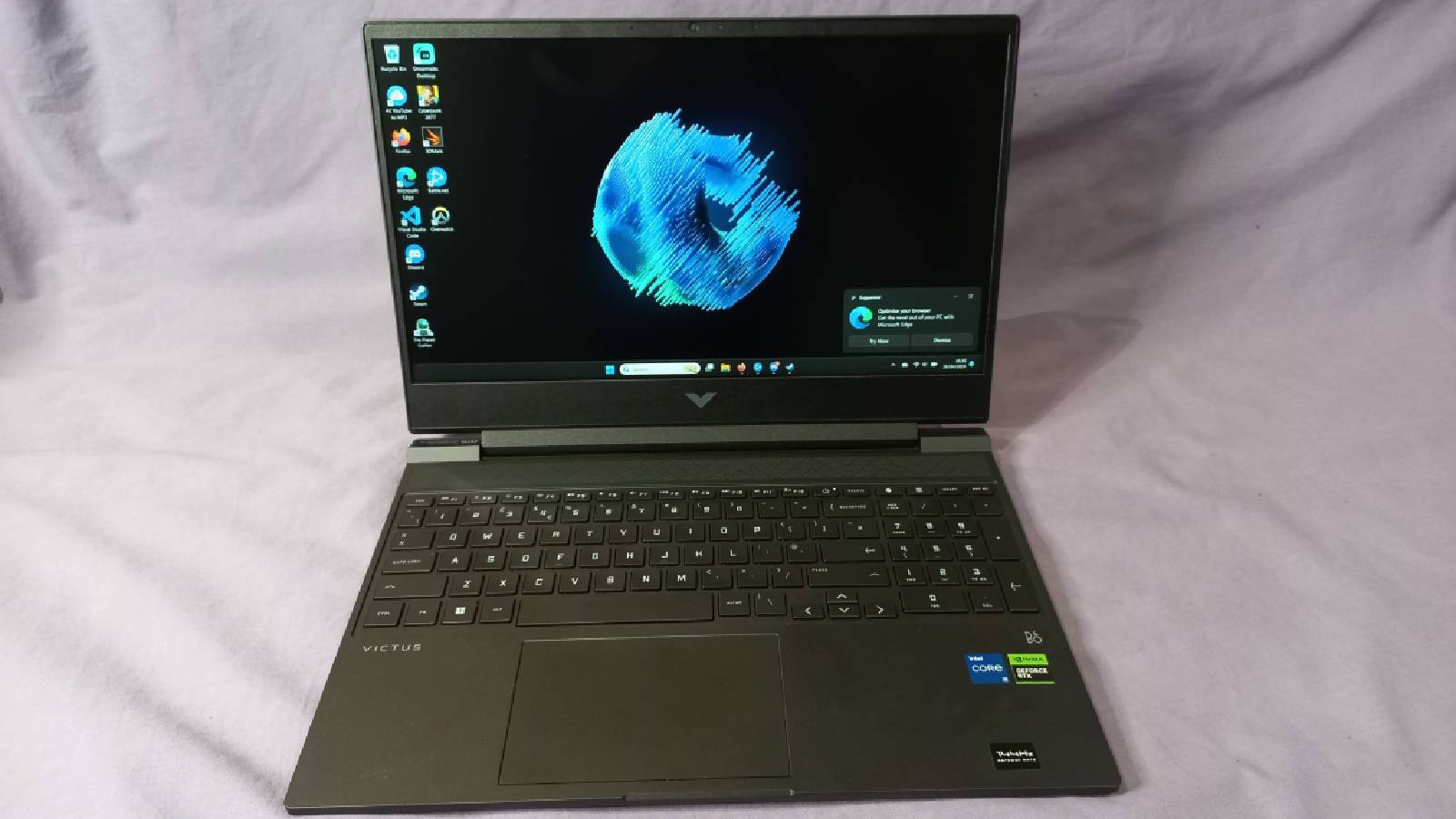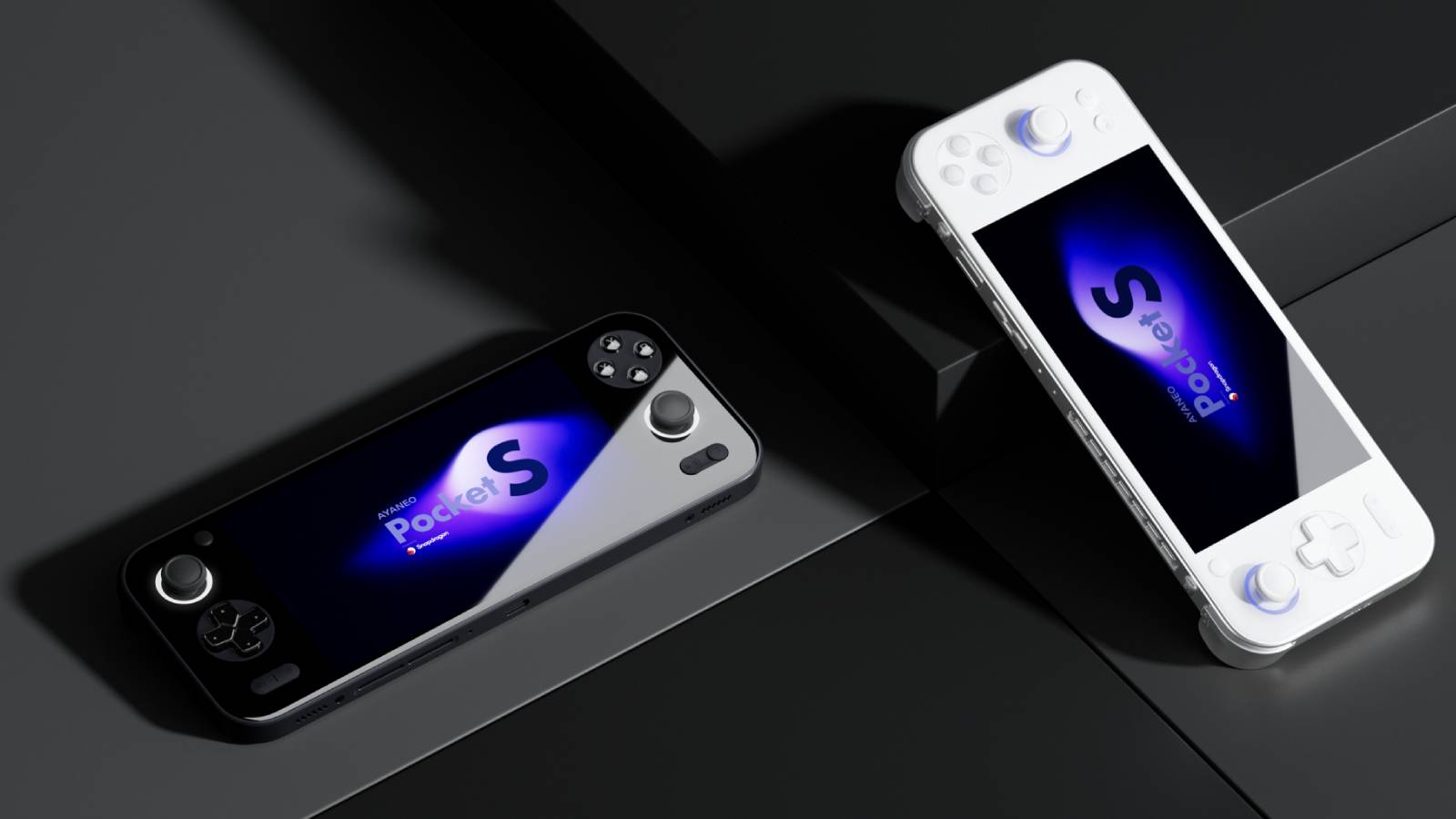HyperMegaTech Super Pocket review: Evercade everywhere
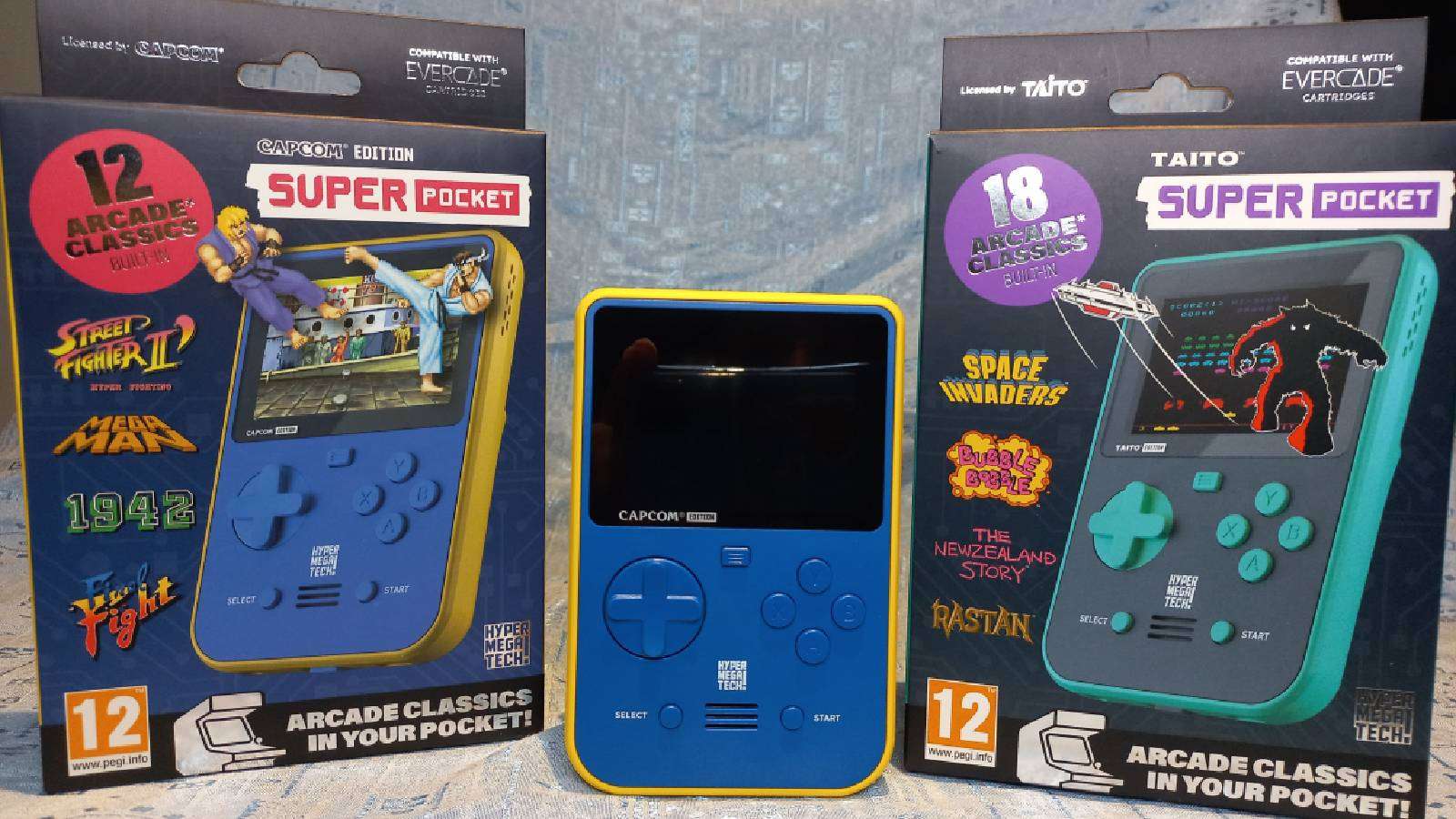
HyperMegaTech delivers a pint-sized retro powerhouse at a reasonable price that caters to Evercade collectors and fans.
Nostalgia is a very powerful force. Though most of the arcades from the 80s and 90s are long gone now, some people still hold affection for those machines that would suck coins out of your wallet for just one more go at beating that level. HyperMegaTech caters to this by offering miniature handheld consoles, packed with built-in games as well as Evercade compatibility. Did I mention that every game in here is also officially licensed?
Key Specs
- Processor: 1.2Ghz quad-core
- RAM: 256MB DDR
- Screen: 2.8-inch (IPS)
- Screen resolution: 320×240
- Battery life: 4 hours
- Dimensions: 78x125x25mm
- Weight: 160g
- Connectivity: Headphones, USB-C charging
Design
These small devices genuinely don’t look like much, looking suspiciously like a children’s toy, or even one of the Chinese retro machines that are everywhere now. Get your hands on one, however, and it is a very different story. The build quality is obvious, and the unit feels solid in your hands despite the diminutive size.
There are four action buttons and a D-pad on the face, along with a Select button which is used to add credits to arcade titles, the obligatory Start button, and a Menu button at the top just under the screen. The D-pad is fairly responsive, and the face buttons have a pleasing action with a minimum of wobble.
Most baffling, though, are the Bumpers. These roughly equate to the L1/L2 and R1/R2 buttons on modern controllers and are indeed labeled as such. The trouble is that they are set on the back of the console, in a position that makes it very hard to press them at all, and makes it nigh impossible to know if you’re hitting the first or second bumper. Perhaps if they had been placed on top of each other in a vertical alignment instead of side-by-side it might have been more practical.
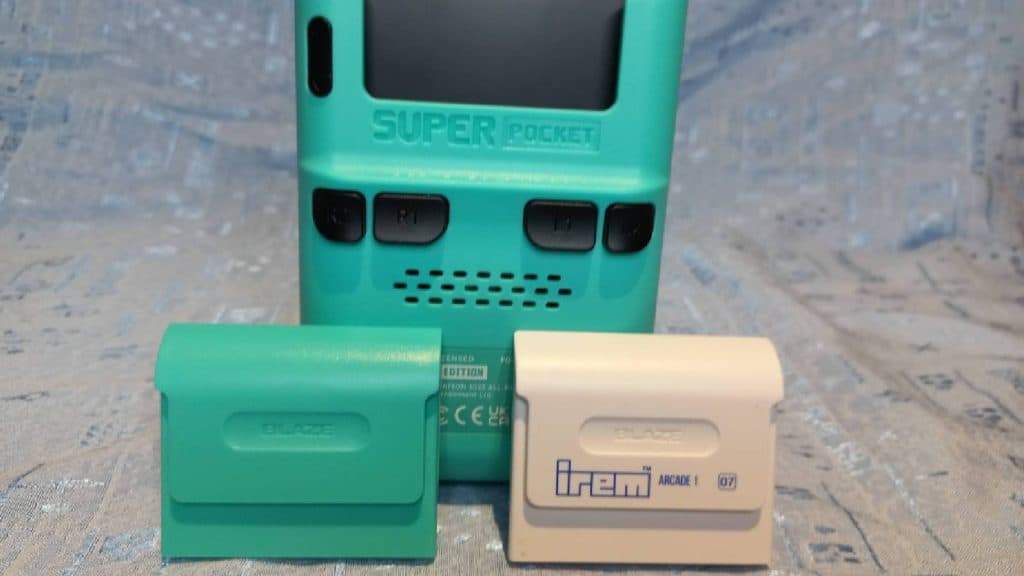
That said, there are a limited number of games included in the package which even need these buttons.
At the moment, the Super Pocket comes in two flavors, Capcom and Taito. The Capcom version calls to mind its iconic blue and yellow logo, while the Taito is more unobtrusive in black and mint green.
The small 2.8” screen is impressively clear and vibrant for its size, though the 320×240 pixel resolution means that some games such as 1942 and even Space Invaders look unfortunately blurry. Choosing the option to force pixel-perfect output does help somewhat, but it is a sad limitation of the console’s size.
The speaker is impressively loud. Turning it on will likely make you jump the first time as it blares out a menu tune and you frantically hunt for the volume controls – which are on the right at the back, incidentally. I’d suggest making use of the included headphone jack – your neighbors will thank you. Despite the loudness, the speaker is still very clear, and the menu tune on the Capcom unit is very catchy. Some sound effects can sound unfortunately tinny, but this is likely due to the small speaker size and is less noticeable with headphones plugged in.
Features
The Super Pocket consoles do have a couple of party pieces that set it apart from other retro-themed mini consoles. The main event is obviously the Evercade cartridge compatibility.
On the back of the unit is a little false cartridge, which can be removed, and an Evercade cart put in place. The excellent design means that the cart is completely flush with the rest of the console and doesn’t change the balance or feel at all.
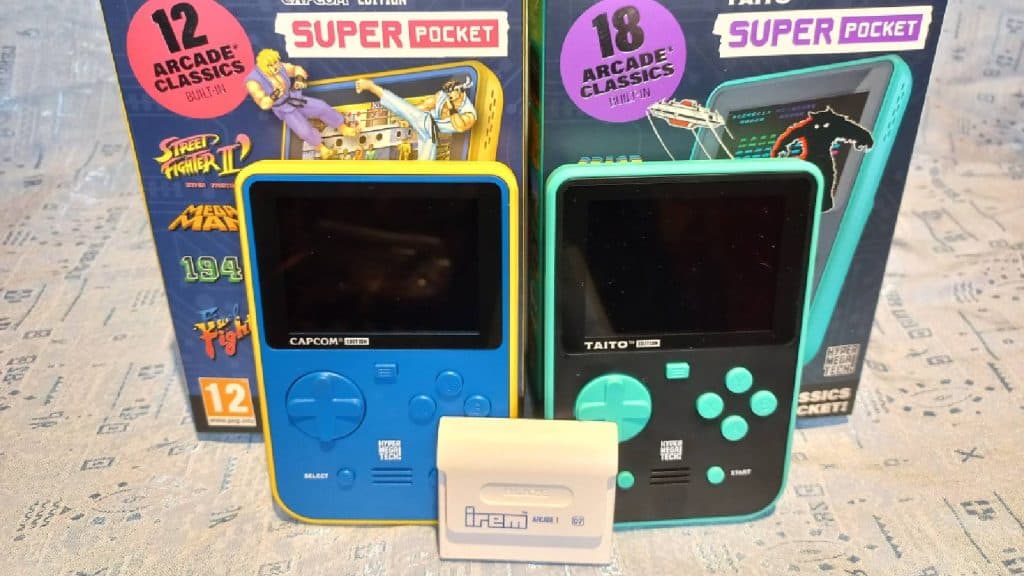
The inclusion of this cartridge slot means the entire Evercade library is open, in addition to the games included in the unit. Switching is easy, just insert your chosen cart, turn on the unit hit the menu button, and select ‘Evercade’.
The other interesting feature of the Super Pocket is the inclusion of ‘Easy Modes’ for many of the included games. The creators of the Super Pocket have rightly realized that though classic arcade games were fun, they were also designed to guzzle coins, so their difficulty could be perhaps tuned higher than some players might be comfortable with. Engaging Easy mode means users can experience the nostalgia without frustration.
Software
Looking at the Taito unit first, it includes eighteen built-in games: Bubble Bobble, Cadash, Chack’n Pop, Don Doko Don, Elevator Action, Football Champ, Growl, Kiki Kaikai, Liquid Kids, Operation Wolf, Puzzle Bobble, Rastan, Space Invaders, Space Invaders ’91, The Fairyland Story, The Legend of Kage, The New Zealand Story, and Volfied.
The only really baffling inclusion is Operation Wolf, a light-gun game that does not work particularly well with the Super Pocket screen and controls. Other than that, it is a brilliant selection of classics, and titles like Puzzle Bobble and The New Zealand Story work particularly well in this format.
On the Capcom side, we have twelve games to choose from: 1942, 1943, 1944: The Loop Master, Bionic Commando, Captain Commando, Final Fight, Forgotten Worlds, Ghouls ’n Ghosts, Mega Man, Street Fighter II: Hyper Fighting, Strider, and Wolf of the Battlefield: MERCS.
Of this selection, Street Fighter II suffers a little from the slightly awkward controls, as it needs the rear bumper buttons for some attacks, but manages to look and feel impressive otherwise. Forgotten Worlds is another confusing choice, as the lack of included instructions means the controls are difficult to parse, even for experienced retro gamers. It is on the Capcom unit where the ‘Easy’ mode might be most useful, as it includes notoriously difficult games, like Ghouls ‘n Ghosts or the original Mega Man.
Should you buy it?
The Super Pocket is not a perfect machine. The controls have some flaws, such as the rear button placement and the Capcom unit in particular has some games that don’t do well on the tiny screen. That said, the vast library of games available due to the Evercade compatibility and official licensing, as well as the extremely reasonable price point and high build quality make it a tempting option for retro gaming on the go.
The verdict: 4/5
There are certainly worse ways to spend your time waiting in a train station or a dentist’s office than engaging in a few rounds of Bubble Bobble.
If you click on a product link on this page we may earn a small affiliate commission.
